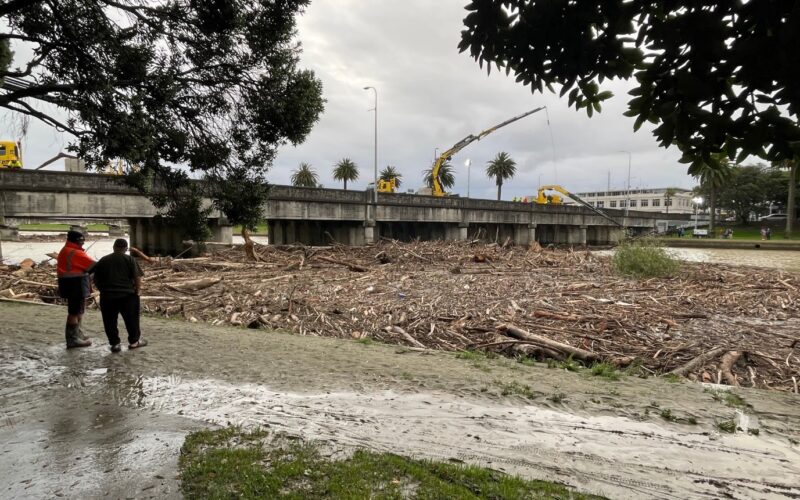The NZ Forestry Owners Association has hit back at calls for a review of forestry practices in the wake of extensive flood damage on the East Coast, calling such demands “way out of line”.
The region was battered by heavy rain this week, causing damage to property, roads and infrastructure. Some have laid blame on the forestry industry, a major player in the region, as log debris, or slash, blocked streams and rivers and added to the flooding woes. The government, which classified the cyclone as a medium-scale event, has made $100,000 available to help farmers and growers in the region recover from the cyclone.
The Environmental Defence Society (EDS) is demanding a commission of inquiry into forestry industry practices, and environmental forestry company Ekos says there is a need to move away from clear-cut forestry to continuous cover forestry methods.
EDS chief executive Gary Taylor said the flood damage is “yet again the consequences of inadequate controls over exotic plantation forestry operations, with massive inundation of private property by slash and debris from upstream forestry land”.
“It is time for a full-blown, independent commission of inquiry to take a fresh look at the sector, the rules that govern it, whether clear-felling with its adverse consequences should continue, and where liability should lie for any and all off-site damage such has occurred at Tolaga Bay.”
NZ Forest Owners Association (NZFOA) president Grant Dodson said his heart goes out to those affected by the flooding but said Taylor’s claims “are way out of line”.
“This isn’t happening all over the country. It is the East Coast, north of Gisborne, and Separation Point at Motueka,” Dodson said.
It is “a legacy problem” on highly erodible land that has been cleared of native forest to make way for sheep and beef farming, he said. The land was returned to forestry 30-40 years ago to try to stabilise it, but erosion has continued.
Dodson said forestry companies are trying to address the forestry slash issue by improving road access to sites and removing more debris. Forests are valuable assets and no one wants to see them washed down rivers.
Dodson said forestry is an easy target, but it is important to note public roading and other farmland also failed during the latest storm.
“Should we be reviewing public roads, as well? The reality is, this was a cyclone and the government has recognised it as medium-scale event.”
Dr Sean Weaver, chief executive of Environmental forestry company Ekos, said the industry needs to stop clear cutting on erodible lands and transition to continuous cover forestry and permanent forests in vulnerable parts of New Zealand.
He said continuous cover forestry for erodible lands is common practice in many countries and undertaken on a small scale in NZ. Continuous cover forestry involves a range of practices, from single tree extraction to patch or strip felling, through to not harvesting timber at all.
Dodson, however, said continuous cover forestry is unrealistic in NZ’s economic environment.










